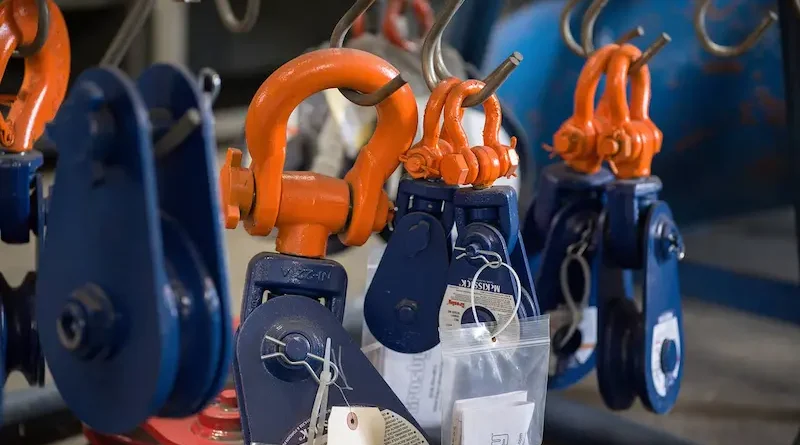Breaking Down the Load Capacity – Matching Rigging Gear to Lifting Requirements
The Basics of Load Capacity in Rigging
Load capacity is the maximum weight a piece of rigging equipment can safely handle during a lift. It is determined by rigorous testing and safety criteria to ensure each device and accessory used on site never exceeds its safe working limits.
Properly matching the right rigging gear to a load’s requirements is non-negotiable. When lifts are planned using gear that matches the load capacity, teams achieve greater operational efficiency, minimize downtime, and—most importantly—keep workers safe. Sourcing quality—keep workers safe. Sourcing quality rigging equipment Little Rock, AR from reputable suppliers is the crucial first step in ensuring that on-site gear meets or exceeds load demands.
Differentiating Rigging Equipment Types
There are several essential categories of rigging gear, each with unique specifications and capacities:
- Slings: Made of wire rope, chain, or synthetic materials. Look for rated capacity, type (web, round, wire rope), and label integrity.
- Shackles: Used to connect slings, hooks, or other components. Ensure the pin and body are matched for size and rating.
- Hoists: Manual or powered devices for vertical lifting. Check for rated load, control mechanism, and inspection stickers.
- Hooks: Attach points must have secure latches and proper load markings. Check for throat opening and any distortions.
Factors That Influence Safe Lifting
Lifting safety is not solely determined by the weight of the load. Consider the following:
- Weight: Always know the exact weight of the load and ensure it does not exceed the lowest-rated gear in the lift assembly.
- Balance and Center of Gravity: If the load is off-balance during lifting, it can shift. Marking or calculating the center of gravity ensures stable, predictable movement.
- Angle: The angle at which slings are attached greatly impacts lifting forces—smaller angles between sling legs increase tension and stress on equipment.
- Hardware Impact: Every piece of hardware distributes and bears some of the load; always consider the weakest link when calculating safety limits.
Calculating the Correct Load Capacity
Start by confirming the weight of the object you intend to lift. Next, identify every component’s Working Load Limit (WLL). If using multiple slings or special lifting angles, apply adjustment factors:
- Step 1: Identify the heaviest component of your lift assembly.
- Step 2: Factor in sling angles—use the angle multiplier chart available in OSHA’s rigging safety guidelines.
- Step 3: The gear with the lowest WLL determines the assembly’s capacity.
- Step 4: Always allow a safety margin by never operating at the maximum theoretical load.
Double-check calculations against documentation and industry publications for compliance. Mistakes often occur when teams rush or use outdated load ratings, so ongoing attention to detail is critical.
Real-Life Errors and What They Teach Us
Unfortunately, industry incident reports highlight the risks of overlooking load capacity. In one case, a construction crew unintentionally exceeded a sling’s capacity due to not accounting for the increased tension from an acute lifting angle. The sling snapped, dropping the load and damaging the surrounding area. Investigations found a lack of calculation process and overlooked inspection requirements at fault.
The Role of Inspection and Maintenance
Routine inspections are an essential layer of safety in rigging operations. Before and after each use, examine slings and hardware for visible wear, corrosion, stretching, or permanent deformation. Take extra caution with synthetic gear—look for frayed fibers, cuts, and UV damage. Scheduled maintenance programs catch developing issues before they cause failures, locking in confidence for the entire crew.
Training for Safe Rigging Operations
All personnel involved in lifting operations should receive formal training on load capacities, equipment inspection, and emergency protocols. Courses should cover reading equipment rating labels, calculations, recognizing compromised gear, and compliance with the latest occupational safety standards. Ongoing education ensures that riggers stay current as technology and standards evolve.
Summary Checklist for Matching Gear and Lifting Requirements
- Determine the precise load weight and configuration.
- Confirm all rigging gear ratings exceed load and configuration demands.
- Apply angle correction factors where needed.
- Inspect every item before and after use for visible and hidden damage.
- Ensure team members are fully trained and documentation is up to date.
- Utilize technology for calculations and inspection tracking.
Combining hands-on training, digital record-keeping, and strict adherence to best practices will ensure safer and more efficient job sites, regardless of lift size or complexity.
Final Thoughts
Understanding and applying load capacity principles is essential for safety and efficiency in rigging operations. Crews can significantly reduce risks and prevent costly mistakes by selecting properly rated equipment, performing accurate calculations, and maintaining rigorous inspection and training programs. Committing to quality gear, careful planning, and ongoing education, every lift can be completed confidently and reliably.
Visit the rest of the site for more interesting and useful articles.

